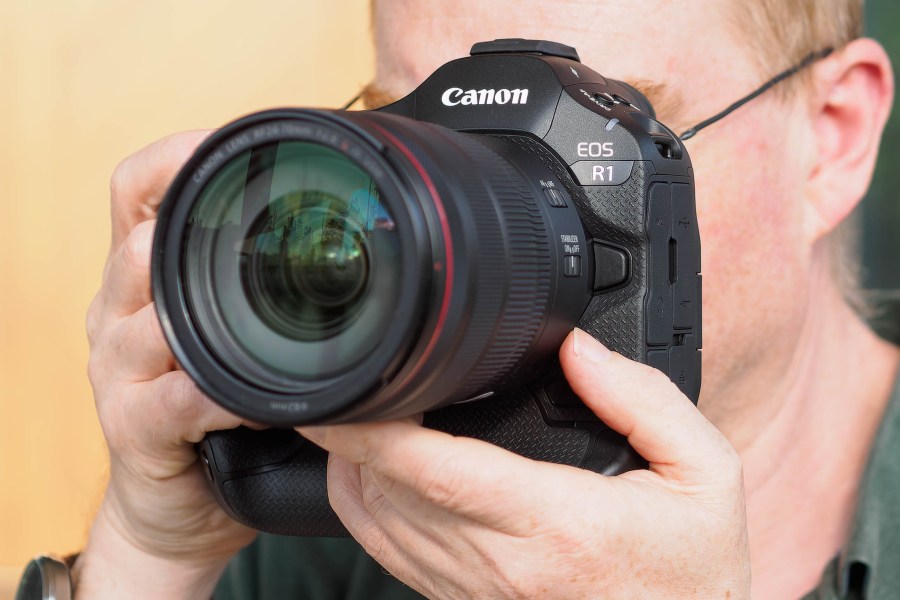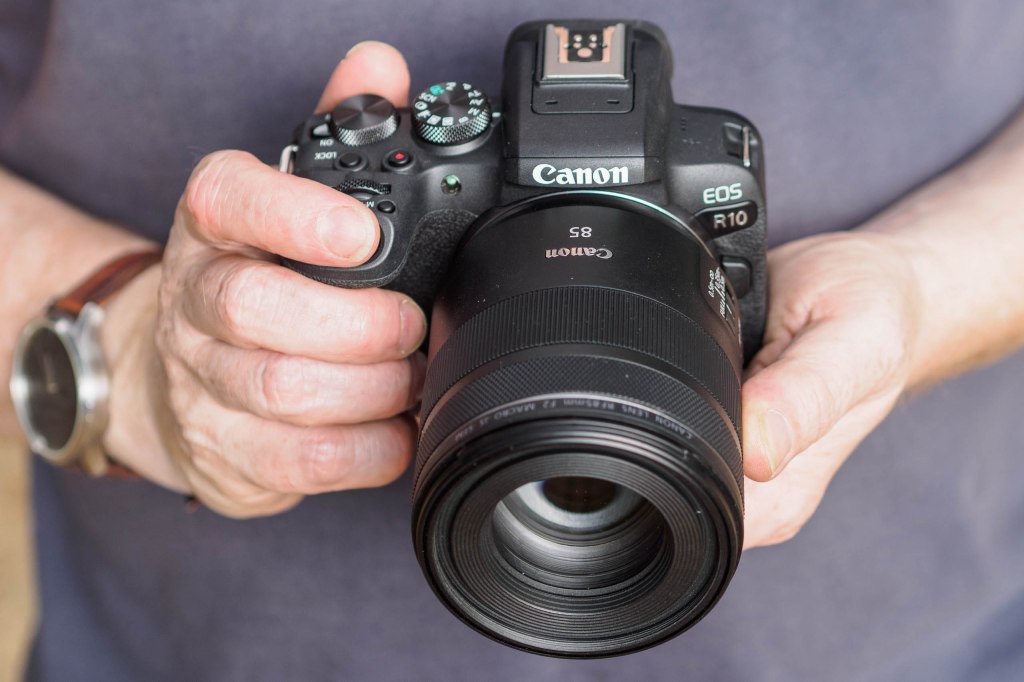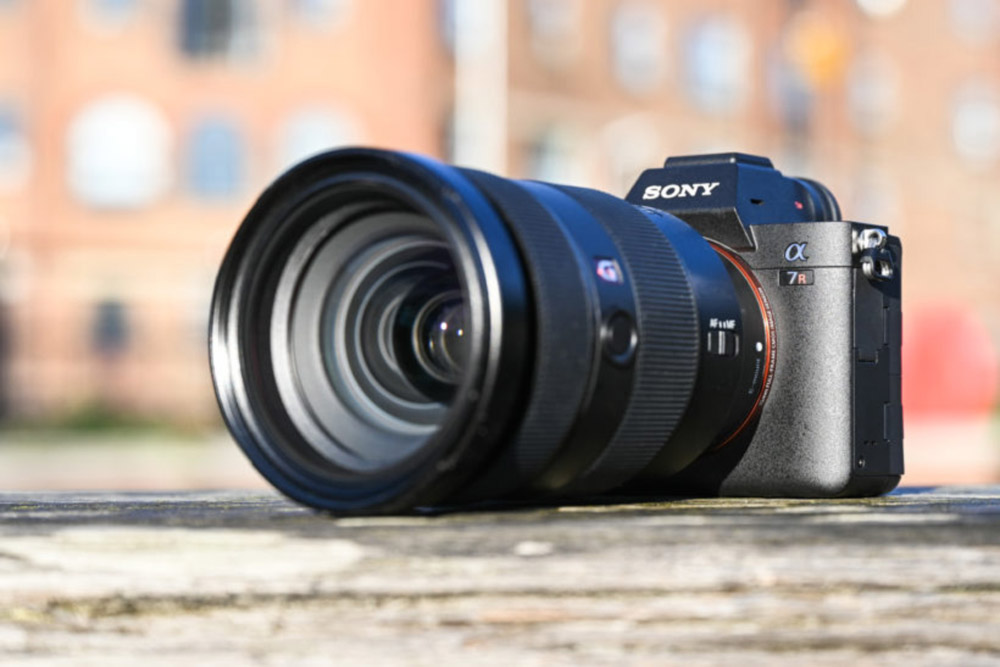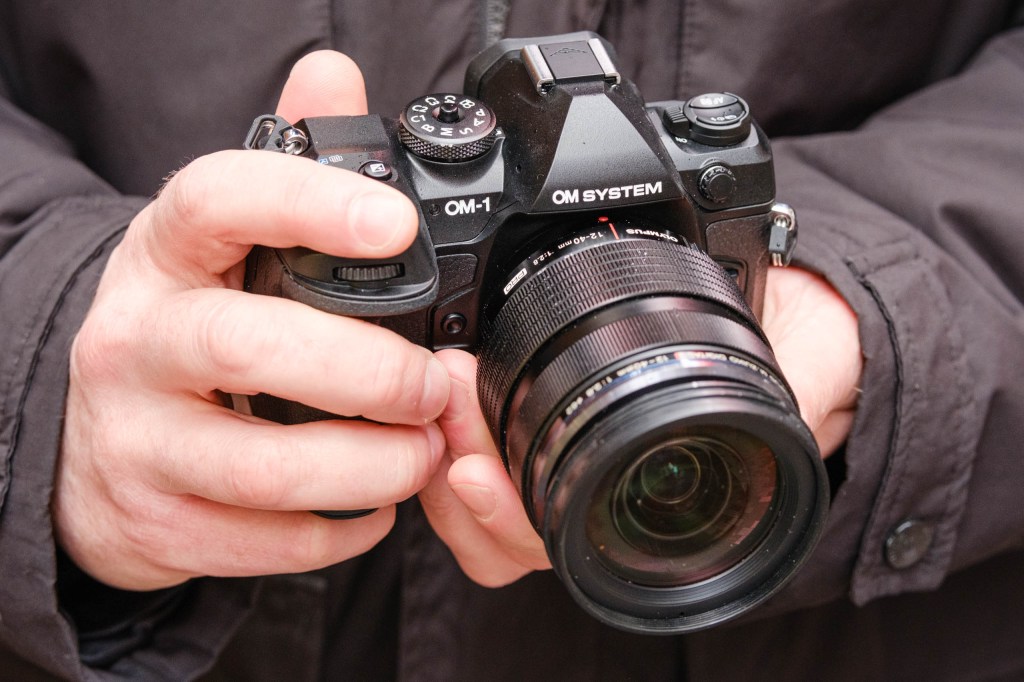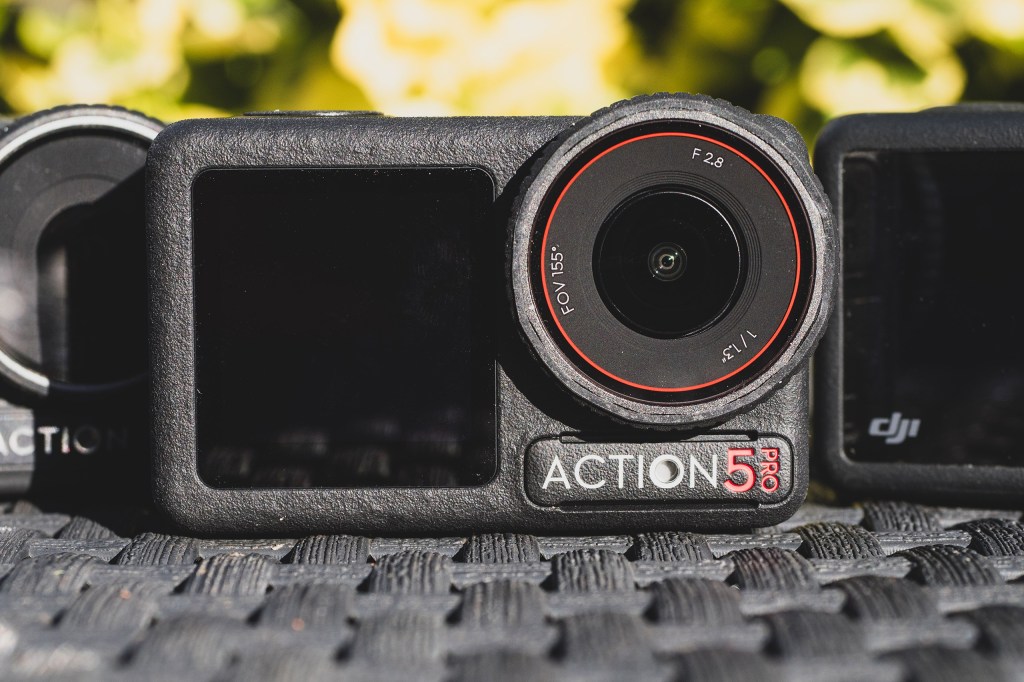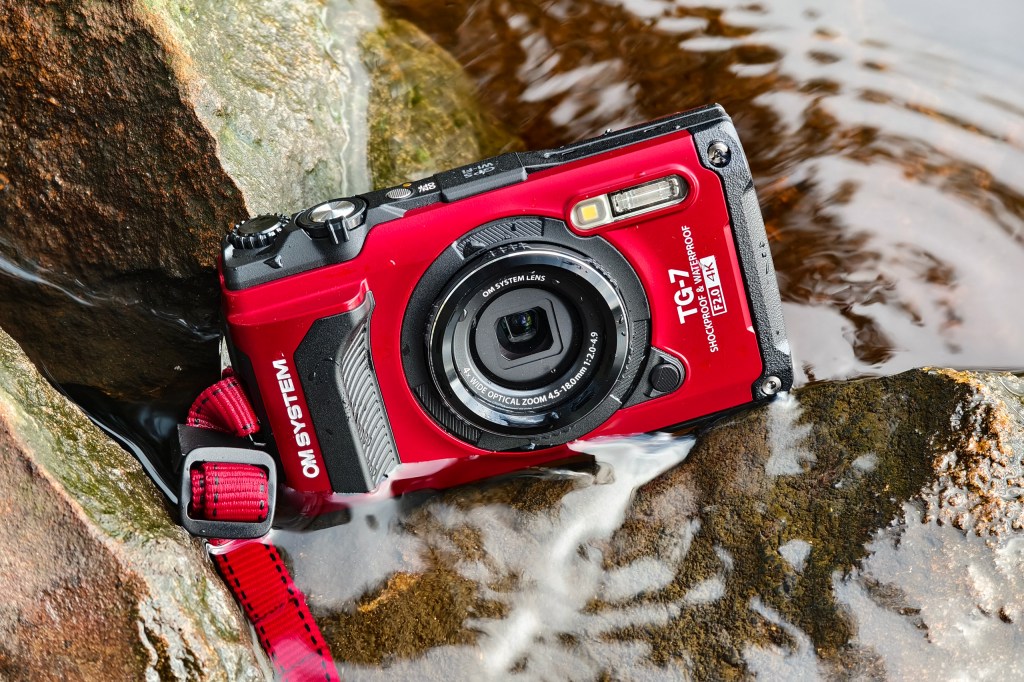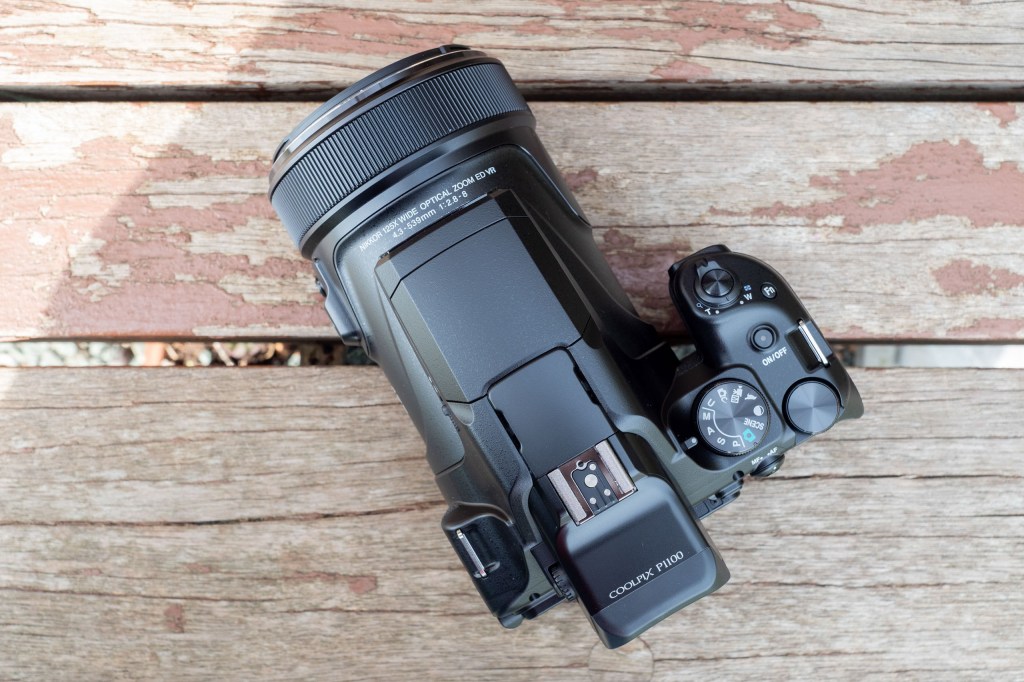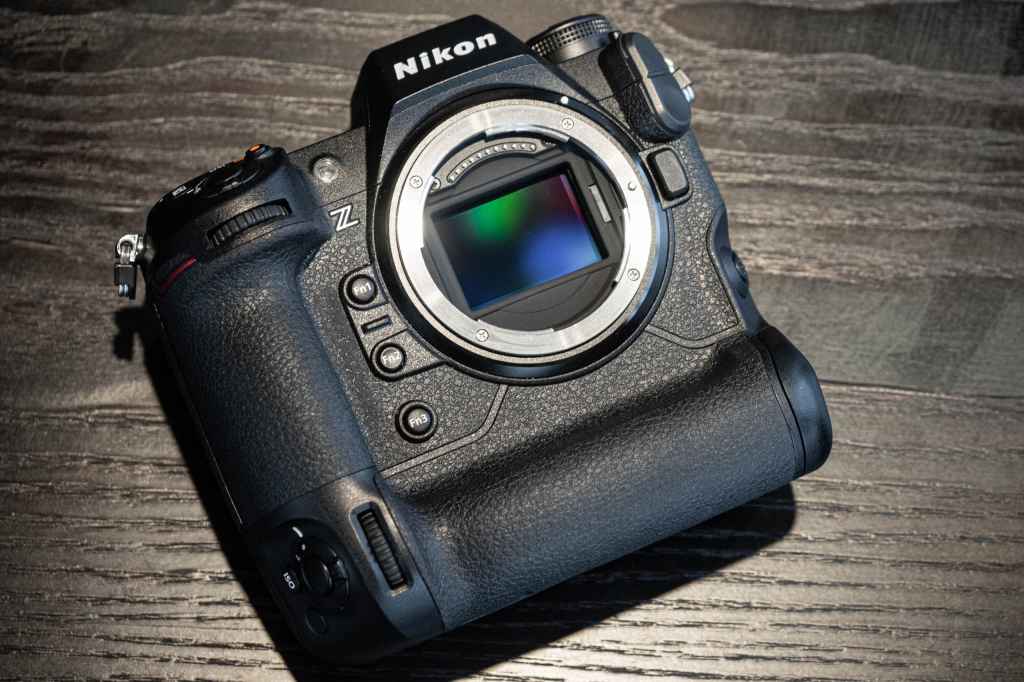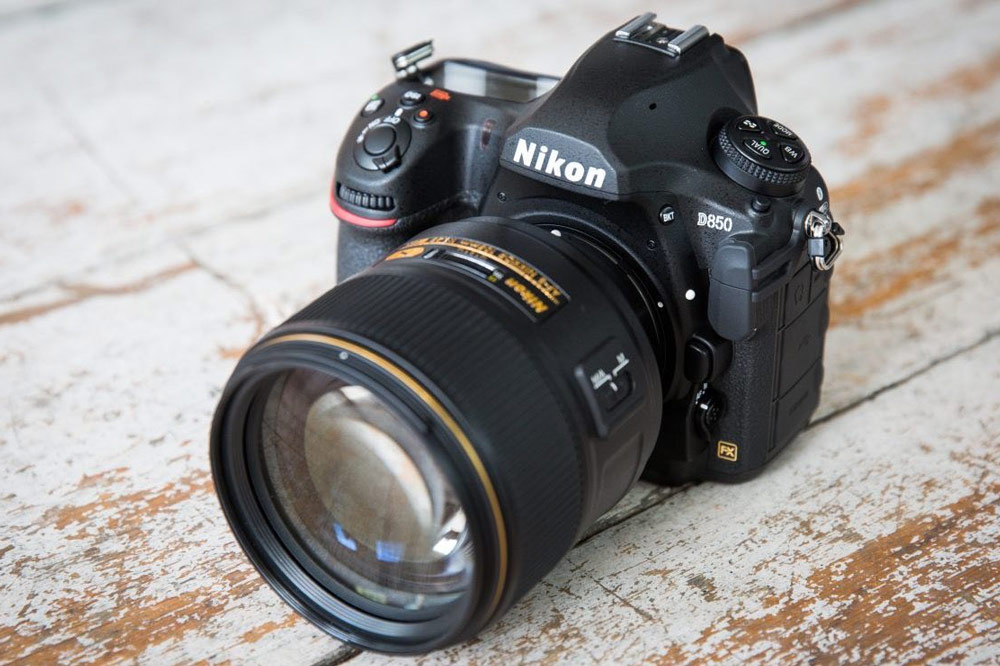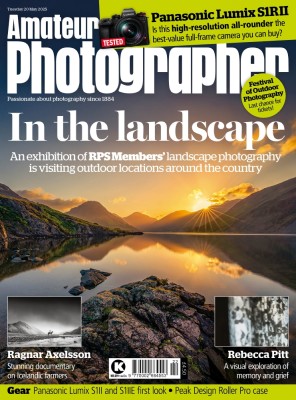In this guide we’re keeping things simple and focusing on the best cameras for photography. While video is an important component of digital cameras these days, not everyone is interested, and if you are the kind of photo purist who isn’t even sure where the video button on your camera is located, this list is for you.
Every single camera on this list is one that our team has used and tested. We’ve included a broad range here, including affordable beginner cameras, top-end mirrorless cameras used by professionals, and everything in between. These are the cameras that have impressed our team with their raw image quality, autofocus capability, burst-shooting speed, robust handling, lens selection and many other factors.
We’ve included DSLRs on the list as well as newer mirrorless cameras and point-and-shoot compacts, with plenty of budget-friendly cameras and DSLR alternatives. For further choices, see our dedicated guides to the best cameras for beginners and the best cameras under $500/£500.
Read on for our list of the best cameras for photography or scrool to the bottom for tips on how to choose the best camera for photography.
The best cameras for photography: our quick list
Looking for the best deal on cameras for photography? Our ‘Buy now’ buttons are setup to automatically take you to the best prices, from trusted retailers. You’ll also find a list of other retailers below each camera, so you can find the right deal for you.
- Best camera for photography overall: Fujifilm X-T5 – Buy now
- Best camera for wildlife photography: Nikon Z8 – Buy now
- Best camera for portrait photography: Canon EOS R5 Mark ll – Buy now
- Best camera under $1,000/£1,000: Canon EOS R10 – Buy now
- Best camera for sports photography: Canon EOS R1 – Buy now
- Best camera under $750/£750: Olympus OM-D E-M10 Mark IV – Buy now
- Best camera for landscape photography: Sony A7R IV – Buy now
- Best camera for astrophotography: OM System OM-1 Mark II – Buy now
- Best camera for macro photography: Nikon Z7 II – Buy now
- Best camera for street photography: Fujifilm X100VI – Buy now
- Best camera for wedding photography: Canon EOS R6 Mark II – Buy now
- Best camera for travel photography: Panasonic Lumix TZ200D / ZS200D – Buy now
- Best camera for action: DJI Osmo Action 5 Pro – Buy now
- Best camera for underwater photography: OM-System Tough TG-7 – Buy now
- Best ultra-zoom compact camera: Nikon Coolpix P1100 – Buy now
Now that you know what you’re looking for, let’s get started with the best cameras for photography…
Why you can trust Amateur Photographer…
We spend many hours testing every product we recommend, in detail, in a variety of situations and shooting scenarios, and only use experts for our reviews, so you can be sure that you’re getting the best products. Find out more about our expert writers.
Best camera overall
Best camera for photography overall: Fujifilm X-T5
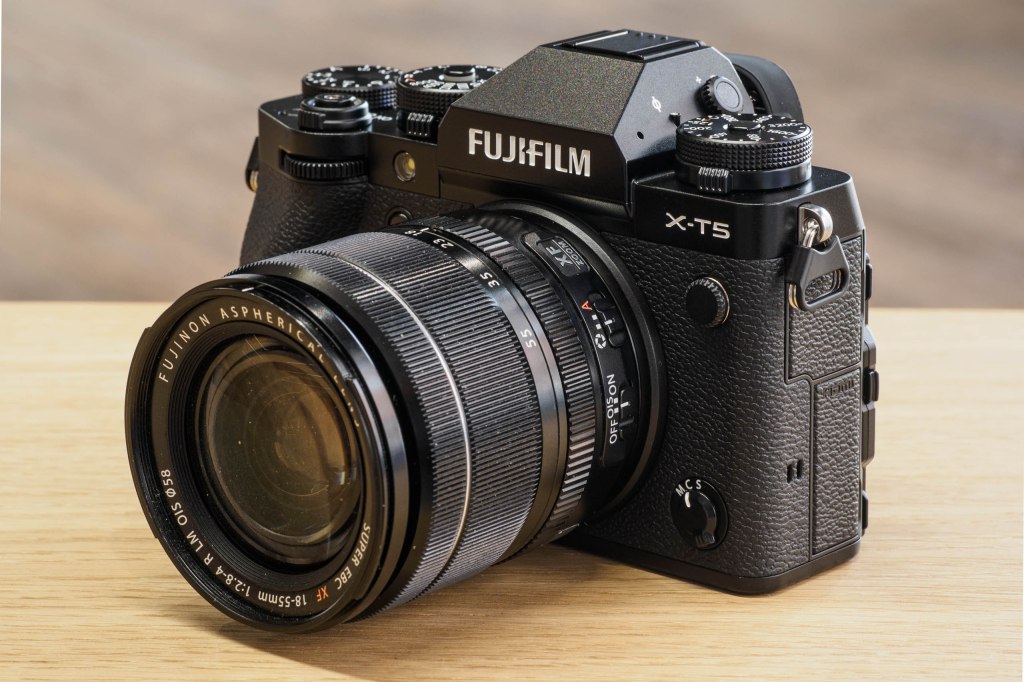
Amateur Photographer verdict
Few cameras match the Fujifilm X-T5 for enthusiast photographers at the price. Resolution, all-round spec, and charming looks and handling make it hard to beat at the price.- Excellent image quality in JPEG and RAW
- Highly capable autofocus
- Analogue-style control dials
- Superb range of X-mount lenses
- Shot buffer fills up quickly in full resolution
- High-res multi-shot mode isn’t much use (though most of them aren’t)
Specifications at a glance:
| Camera type | Mirrorless |
| Sensor | 40.2MP APS-C X-Trans CMOS 5 HR sensor |
| Continuous shooting | 15fps shooting (mechanical shutter); 20fps (electronic shutter) |
| ISO | 125-51,200 (extended) |
| Image stabilisation | Up to 7 stops |
Built for stills photographers through and through, the Fujifilm X-T5 is a magnificent machine. An APS-C mirrorless model and one of the crown jewels of the fabulous Fujifilm X system, this camera arrived to great acclaim among stills shooters. Priced at a level that pitches it towards enthusiasts, the Fujifilm X-T5 is nevertheless stuffed with enough high-end features to rival professional models – and of course, it produces fantastic images.
Shoot up to 1/180,000sec
The key appeal of the X-T series has remained basically unchanged since the Fujifilm X-T1 – a combination of a powerful feature-set and tactile, dial-led controls that give the camera a retro, analogue-style feel to operate. The result is a machine that’s just fun to use – but despite its retro appearance, on the inside, the Fujifilm X-T5 is absolutely cutting-edge. It benefits from features like AI-powered subject detection, 5-axis in-body image stabilisation up to 7 stops and an electronic shutter with maximum speeds of up to 1/180,000sec.
Stunning JPEG output
Fully featured and fun to use, at a much more reasonable price than its pro-spec rivals, the Fujifilm X-T5 is the camera to beat for enthusiast photographers.
Fujifilm cameras, including the X-T5, are noted for the high quality of the JPEGs they produce. If you prefer to shoot in JPEG than in RAW for the immediacy and convenience, a Fujifilm camera like the X-T5 is a perfect choice as it gives you the best quality straight out of camera (that’s why Fujifilm topped our guide to the best camera brands for JPEGs). For extra style, you can also take advantage of Fujifilm’s Film Simulation modes to emulate the looks of classic film stocks.
Mini version
If the X-T5 is out of your price range, then consider the more recent Fujifilm X-T50. Following Fujifilm’s tradition of releasing slimmed-down versions of its flagship cameras, the X-T50 takes the imaging guts of the X-T5 and puts them in a smaller body. It lacks an ISO dial, has a smaller viewfinder and its screen doesn’t tilt in three directions – but it still takes the same amazing pictures as the X-T5.
Read our full Fujifilm X-T5 review.
Best for wildlife
Best camera for wildlife photography: Nikon Z8
Amateur Photographer verdict
A successor to the legendary Nikon D850 DSLR, and a slimmed-down version of the flagship mirrorless Z9, the Nikon Z8 is a perfectly pitched package for wildlife photographers.- Superb for continuous autofocus
- Superb autofocusing / subject detection
- Robust build quality
- Still fairly hefty
- Cheaper than Z9, but still not cheap
Specifications at a glance:
| Camera type | Full-frame Mirrorless |
| Sensor | 45.7MP stacked backside illuminated (BSI) sensor |
| Continuous shooting | 20 frames per second shooting in RAW |
| ISO | 32-102,400 (extended) |
| Image stabilisation | Up to 6 stops with Nikon Z VR lenses |
A slimmed-down cousin to the professional flagship Nikon Z9, the Nikon Z8 is right up there with the best cameras you can buy for wildlife photography. Priced a little more favourably for enthusiasts, the Nikon Z8 is still an expensive camera to be sure, but is worth it for those who can afford it. Super-fast burst-shooting speeds can be achieved even when shooting at the full-resolution of the 45.7MP sensor, in RAW format. While you’ll need to invest in expensive CFexpress cards to truly benefit from these dizzying speeds, the Z8 is unlike the Z9 in that it least gives you the option to use a cheaper SD card if you prefer.
The camera’s build feels rugged in the hand, perfectly suited to those long days out in the field tracking elusive wildlife subjects, and the control layout is intuitively designed.
Subject-detect focusing
Naturally, the fast burst mode wouldn’t matter if the Z8 didn’t have everything else it needed to nail the shot, but its AI-powered subject-detect autofocus is essentially cheat mode for wildlife photography. The tracking on the AF is also eerily good, being able to identify the most important subject in any frame and follow it around no matter where it moves. Image quality is also absolutely gorgeous in both JPEG and RAW. As we found in our review, the Z8 delivers brilliant detail in punchy images all the way up to ISO 25,600.
The Nikon Z8 is not the only camera well-suited to nature, however. Be sure to check our guide to the best cameras for wildlife photography for more excellent suggestions. If you want a similar camera to the Z9 without the sky-high price tag, try the Nikon Z5, or the APS-C Nikon Z50
Read our full Nikon Z8 review.
Best for portraits
Best camera for portrait photography: Canon EOS R5 Mark ll
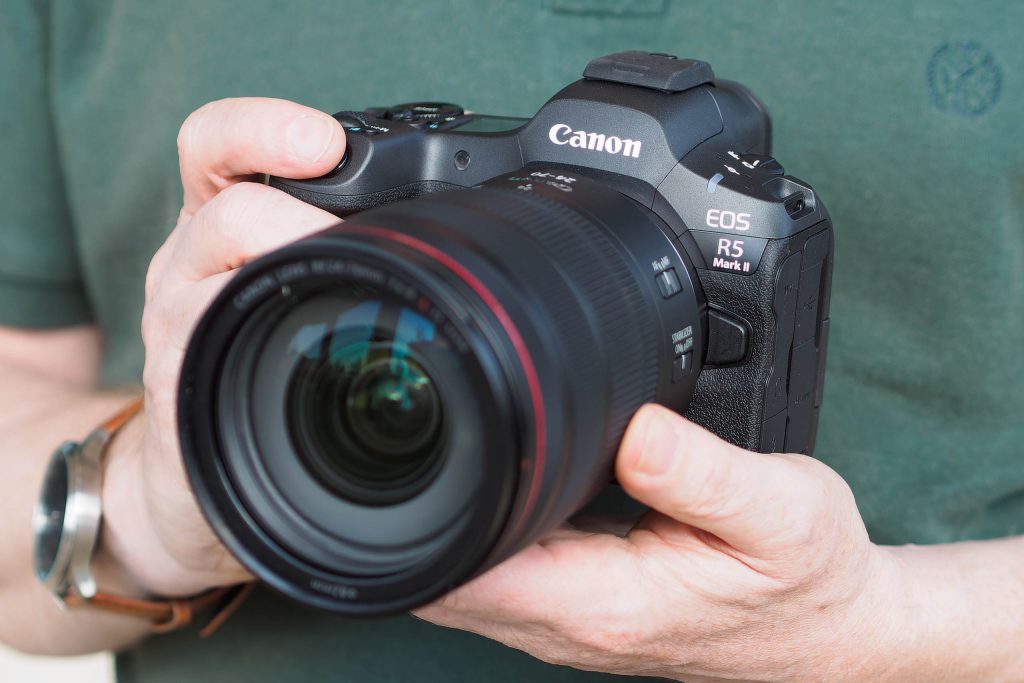
Amateur Photographer verdict
The Canon EOS R5 Mark II could be the best professional high-resolution, high-speed all-rounder on the market. The addition of eye control focus further elevates it above its rivals.- Incredibly impressive subject detection AF
- Excellent handling and control layout
- Eye Control Focus enables easy subject selection
- Great image quality in both JPEG and raw
- Very effective image stabilisation
- Eye control may not work well for everyone
- Won’t use some third-party LP-E6 batteries
Specifications at a glance:
| Camera type | Mirrorless |
| Sensor | 45MP stacked CMOS sensor |
| Continuous shooting | 30 fps |
| ISO | 50-102,400 (extended) |
| Image stabilisation | 8.5 stops |
The Canon EOS R5 Mark II succeeds the four-year-old Canon EOS R5, with a huge array of updates and improvements. Launched in 2024 alongside the sports-focused Canon EOS R1, it’s designed to be a highly capable professional all-rounder, that can handle almost any task for either photography or video. It sports a 45MP sensor, can shoot at up to 30 frames per second, and record 8K video at 60fps.
Like the Canon EOS R1, it is based around a concept that Canon calls ‘Accelerated Capture’. This means that they combine a stacked, backside-illuminated sensor with a DIGIC X processor that’s boosted by a new DIGIC Accelerator processor. This enables new autofocus features, faster video shooting, and generally more responsive operation.
Other major updates include Canon’s unique Eye Control Focus technology, as previously seen on the Canon EOS R3, and a built-in heat-dissipation pathway. The latter promises to fix the original EOS R5’s Achilles’ heel of overheating, which limited it to short video recording times at high resolution, and long recovery times.
Check what lenses are available for the Canon EOS R5 Mark ll in our guide to the best Canon RF mount lenses
Read our full Canon EOS R5 Mark ll review.
Best under £1000
Best camera under £1,000 / $1,000: Canon EOS R10
Amateur Photographer verdict
A likeable entry level camera that handles nicely and delivers attractive images.- Lightweight and easy to carry
- Highly capable subject-detection autofocus
- Can be adapted to take EF-mount lenses
- Small viewfinder
- No in-body stabilisation
Specifications at a glance:
| Camera type | Mirrorless |
| Sensor | 24.2 MP CMOS (APS-C) sensor |
| Continuous shooting | 15 fps |
| ISO | 100-51,200 (extended) |
| Image stabilisation | No |
Canon is currently filling out the beginner-to-intermediate end of its EOS R mirrorless line like gangbusters – certainly more so than any other manufacturer. For a great camera and lens combination that can be had for £1,000 / $1,000, the mid-range Canon EOS R10 is an excellent choice, as it can be bought with an 18-45mm kit lens and still come in under budget. The newer EOS R100 is cheaper still, but has pretty basic specifications.
Focusing
Buying older cameras second-hand is often the best way to get top-end features for a low price. The EOS R10 is loaded with pretty impressive stuff for a camera at this price point. Probably the most significant difference between the EOS R10 and a similarly priced second-hand camera will be subject-detection autofocus, which has filtered down from Canon’s pro cameras and is a genuine game-changer. The little EOS R10 can recognise and lock onto subjects like humans, animals, and vehicles, and track them around the frame with incredible accuracy. A second-hand Sony A6000 from 2014 may be cheaper, but it won’t do that.
EF-EOS R adapter
The EOS R10 is an APS-C camera, and the selection of APS-C lenses in the RF-mount range is still disappointingly small, meaning you may be stuck with unbalanced full-frame lenses. For an alternative, though, consider shelling out for an EF-EOS R adapter. Once you’ve paid that initial cost (save money by getting one second-hand), you have access to an enormous range of ultra-cheap EF-mount DSLR lenses, which will work on your EOS R10 with full functionality. Canon has long been well known for its user-friendly beginner DSLRs and (in the US) Rebel-series cameras, but its newer RF-S mount cameras perhaps need a few more lenses before they are credible Canon DSLR alternatives.
Read our full Canon EOS R10 review.
Best for sports
Best camera for sports photography: Canon EOS R1
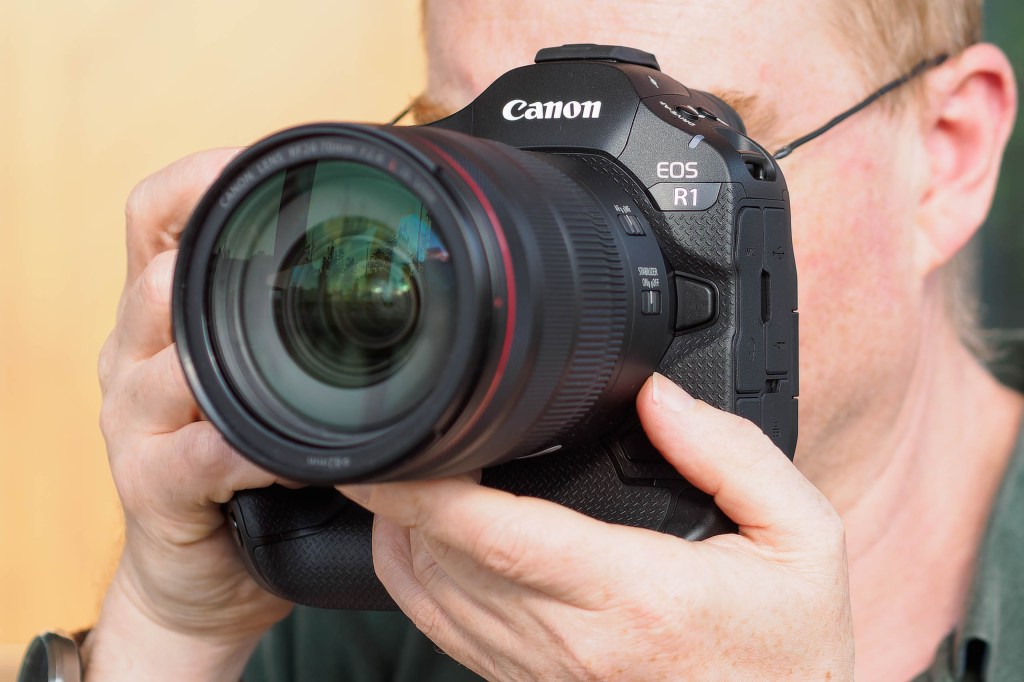
Amateur Photographer verdict
A super-fast, super-capable camera that’s built like a tank, the Canon EOS R1 is a monster performer for the top end of sports photography.- Superb autofocus with Eye Control
- Fantastically fast shooting
- Superb viewfinder and screen
- Big and heavy
- Very expensive
- Slightly compromised dynamic range
Specifications at a glance:
| Camera type | Mirrorless |
| Sensor | 24MP stacked CMOS sensor |
| Continuous shooting | 40 fps |
| ISO | 50-409,600 (extended) |
| Image stabilisation | Up to 8.5 stops |
This is an utterly remarkable camera that you almost certainly do not need to own. The Canon EOS R1 is an astounding sports camera. It’s capable of shooting 40fps bursts for up to 300 frames, and it has a hyper-intelligent autofocus system equipped with Action Priority, meaning it can lock onto the area of the frame where the action is taking place. It’s built like a tank, with one of the best electronic viewfinders we’ve ever seen.
The EOS R1 provides a huge array of controls, giving you multiple means of accomplishing pretty much any adjustment or setting you need to make. It’s got highly effective in-body stabilisation, rated up to 8.5 stops, and it also boasts Canon’s unique and powerful Eye Control focus, which sets the focus point by determining what you’re looking at in the high resolution viewfinder.
Its relatively low-resolution 24MP sensor may sound disappointing when compared to some of the high resolution offerings here, but it helps to keep file sizes down and is more than enough for printing at fairly large sizes. Pair it with one of the best Canon RF lenses for sports and action photography and you’ve got one hell of a setup on your hands.
We could go on – and indeed, in our full review we lovingly detailed everything that’s great about this astonishing camera. However, with a price exceeding the $6,000 mark, the Canon EOS R1 is almost certainly beyond the budget of pretty much everyone reading this – and honestly beyond the needs. Unless you are photographing world-class sports events for top publications, you simply don’t need the level of power this camera is offering.
Read our full Canon EOS R1 review.
Best under £750
Best camera under £750/$750: Olympus OM-D E-M10 Mark IV
Amateur Photographer verdict
A lightweight, beginner-friendly MFT camera, with a retro design that’s simply a joy to use.- Huge lens catalogue
- User-friendly, but deep
- Stylish looks
- Smaller sensor
- RAW image quality inferior to APS-C
Specifications at a glance:
| Camera type | Mirrorless |
| Sensor | 20MP Micro Four Thirds sensor |
| Continuous shooting | 15 fps burst shooting |
| ISO | 80-25,600 (extended) |
| Image stabilisation | 4.5 stops |
This tidy and tiny Micro Four Thirds camera is a fantastic beginner’s way in to mirrorless cameras, and comes at a bargain price, too. The Olympus OM-D E-M10 Mark IV is absolutely bursting with cool photography features, including a touchscreen interface, stylish Art Filters, and sophisticated Live Composite for long exposures. When we reviewed the camera, we almost ran out of time to try out all its features, there are so many to try out and play with.
Using the Micro Four Thirds system means you’re working with a smaller sensor than APS-C cameras like the Fujifilm X-S10. However, it does give you access to a huge catalogue of Micro Four Thirds lenses, those made by both Olympus and Panasonic (and others), and also the 2x crop factor gives you a good deal of extra reach, effectively transforming a 50mm lens into a 100mm one.
Stylish and likeable, the Olympus OM-D E-M10 Mark IV is an ideal mirrorless camera for beginner photographers on a budget.
Read our Olympus OM-D E-M10 Mark IV review.
Best for landscape
Best camera for landscape photography: Sony A7R IV
Amateur Photographer verdict
Without a compromise on speed, this 61MP beast will deliver high dynamic range and astonishing image quality.- Super high resolution sensor
- Tilting screen
- Relatively affordable
- Handling is a little awkward at times
- Not an all-rounder
Specifications at a glance:
| Camera type | Mirrorless |
| Sensor | 61MP full frame |
| Continuous shooting | 10 fps |
| ISO | 50-102,400 (extended) |
| Image stabilisation | 5.5 stops |
The winner of our product of the year in 2020, this superb high-resolution camera is still a fantastic choice for landscape. We loved it when we first reviewed it, and it continues to impress today.
A key reason for this is its very high-resolution 61 megapixel sensor – the highest you’ll find on our list, and the highest you’ll find outside of medium format cameras. That super high resolution sensor is ideal for landscapes, and, being packed into the relatively small body of the Sony A7 series means you can carry it around to reach all sorts of photogenic locations without troubling your back too much.
Pixel-Shift high resolution mode
Although you may want to use a tripod for landscapes, if you want to keep it light, you’ll also benefit from 5-axis image stabilisation. If you do pack that tripod, making use of Pixel-Shift Multi Shooting to create an even higher resolution composite image is likely to be tempting to serious landscape photographers.
If you like to photograph other subjects, as well as landscapes, the A7R IV isn’t well suited to everything. While it does well at other static subjects – such as portraits and macro – with 10fps shooting, action and wildlife shooters would do better to look elsewhere.
There are other cameras which we’d recommend for this genre – make sure to take a look at our best camera for landscape photography guide to find out more.
Updated by the Sony Alpha A7R V, this model is still well worth looking at, particularly if you want to save money.
Read our full Sony A7R IV review.
Best for astrophotography
Best camera for astrophotography: OM System OM-1 Mark II
Amateur Photographer verdict
Pushing the envelope still further, the OM System OM-1 Mark II comes loaded with features that make it great for landscapes and astrophotography in particular.- Night Vision and Starry Sky AF
- Digital ND grad filter
- IP53 weatherproofing
- Smaller sensor than most
- Fairly minor upgrade from OM-1
Specifications at a glance:
| Camera type | Micro Four Thirds Mirrorless camera |
| Sensor | 20MP stacked MFT sensor |
| Continuous shooting | 50fps with C-AF, 120fps fixed AF with extended buffer |
| ISO | 80-102,400 |
| Image stabilisation | Up to 8.5 stops |
The newest flagship camera from OM System, this Micro Four Thirds mirrorless model offers a number of clever computational features that are unique among its peers. A digital Live Grad ND filter that’s fully adjustable makes it easy to control bright skies for balanced exposures when shooting outdoors. The autofocus system has also been upgraded compared to the previous OM-1, and a deeper buffer allows you to keep burst-shooting for longer – at the maximum rate of 120fps, the OM-1 Mark II can capture up to 213 RAWs.
While it’s not a huge departure from the previous model (which is still available, and cheaper), the OM-1 Mark II makes a lot of clever additions for specialised photography. Macro shooters can benefit from in-camera focus stacking and bracketing, and astrophotographers once again get the famous Starry Sky AF that’s designed to help capture clear images of the night sky. You may also want to try out the Night Vision mode for the simulated OVF (optical viewfinder), which is calibrated to support astrophotographer (and works in conjunction with the Starry Sky AF).
Versatility
Other than that, you also have excellent 8.5 stops image stabilisation – perfect for long exposures – and the fact that the camera (and accompanying lenses) is smaller and lighter than many other models, making it ideal for toting around in the dark. It’s well suited to a variety of other photography as well, including wildlife, travel, sports and more thanks to high-speed shooting and advanced subject detection AF.
If you’re interested in this genre of photography, make sure to check out our guide to the best cameras for astrophotography for more suggestions.
You also gain access to a wide range of Micro Four Thirds lenses with this camera, making it a great choice for those looking for compact or budget lenses.
Read our full OM System OM-1 Mark II review
Best for macro
Best camera for macro photography: Nikon Z7 II
Amateur Photographer verdict
One of Nikon’s finest high resolution mirrorless cameras, it is remarkably impressive and offers magnificent latitude when processing RAW files.- High resolution sensor
- Useful tilting screen
- Can use existing Nikon macro lenses
- Relatively minor upgrade from predecessor
- Somewhat expensive
Specifications at a glance:
| Camera type | Mirrorless |
| Sensor | 45.7 MP full-frame BSI CMOS sensor |
| Continuous shooting | 10 fps (single AF) |
| ISO | ISO 32-102,400 (extended) |
| Image stabilisation | Up to 5 stops with Nikon Z VR lenses |
For macro and close-up work, it’s a good idea to look for something with a high resolution sensor to make sure you capture all that exquisite fine detail.
The Nikon Z7 II is one of the highest resolution sensors on the market, with a 45.7MP sensor, so it’s just the ticket for that job. There’s a couple of dedicated Z-mount macro lenses, while if you’ve already got a Nikon DSLR macro lens, you can use it with the Z7 II via an optional adapter.
Having a tilting screen is useful for shooting from low angles, or for shooting with a remote release / wirelessly so as not to disturb delicate subjects. With that in mind, 5-stop in-body stabilisation (IBIS) helps when shooting close-up subjects handheld too.
We liked the handling of the Z7 II, with the excellent grip proving to be a particular winner. We also thought it was very intuitive to use, making it ideal for making quick changes.
Read our full Nikon Z7 II review.
Best for street photography
Best camera for street photography: Fujifilm X100VI
Amateur Photographer verdict
The most desired camera of the year, the Fujifilm X100VI is every street photographer’s dream – provided you can get hold of one.- Effective built-in stabilisation
- Discreet for street shooting
- Beautiful colour rendition
- Hard to get hold of
- Full weather-sealing costs extra
Specifications at a glance:
| Camera type | Compact camera with fixed 23mm (35mm equivalent lens) |
| Sensor | 40.2MP APS-C X-Trans CMOS 5 HR sensor |
| Continuous shooting | 11fps (mechanical shutter) 20fps with 1.29x crop (electronic shutter) |
| ISO | 64-51,200 (extended) |
| Image stabilisation | 6 stops |
When it comes to street photography, you want your camera to be discreet, light and capable of grabbing the moment as it unfolds in front of you. It helps if it’s also attractive to look at, too.
The Fujifilm X100VI is the perfect camera for ticking all those boxes. A fixed-lens compact with a street-friendly 35mm equivalent, it produces absolutely gorgeous images straight out of camera. Having access to Fujifilm’s famous Film Simulations allows you to give your images a distinct look, and produce beautiful JPEGs straight out of camera.
With a two-tilting screen for “from the hip” shooting, as well as one of the finest viewfinders in all photography, the X100VI is quite simply a wonderful thing to use. It’s had a bump in resolution from the previous Fujifilm X100V, going from 26.1MP to 40MP. This has the added benefit of expanding the camera’s versatility, as it allows for lossless cropping into images, effectively simulating a longer lens. Indeed, the X100VI lets you shoot in a crop mode to take advantage of this.
All this comes in a design which is small and light, yet still packs a pretty large APS-C sized sensor. The only real trade-off is the price, which is higher than that of the X100V and the fact that currently getting hold of one involves a multi-month waiting list.
If you landed on the X100VI then take a look at our guide of practical and stylish accessories for the Fujifilm X100VI to compliment your camera.
Or if you are still looking, check out our other picks of the best cameras for street photography if you think your patience might not last that long. We also have a dedicated guide to Fujifilm X100V and X100VI alternatives.
Read our full Fujifilm X100VI review.
Best for weddings
Best camera for wedding photography: Canon EOS R6 Mark II
Amateur Photographer verdict
A superb all-rounder that handles well, and its updates and modern features perform incredibly well to make for a very powerful camera indeed.- Fast burst mode and deep buffer
- Excellent viewfinder and LCD screen
- Superb image quality
- Some rolling shutter distortion with electronic shutter
- Price hike over first EOS R6
Specifications at a glance:
| Camera type | Mirrorless |
| Sensor | 24.2MP Dual Pixel CMOS II sensor |
| Continuous shooting | 12fps (mechanical shutter), 40fps (electronic shutter) |
| ISO | 50-204,800 (extended) |
| Image stabilisation | 8 stops |
A good wedding camera needs to do a bit of everything, and do it well enough to dazzle some of the most demanding clients out there. Something that perfectly fits that bill is the Canon EOS R6 II, a full-frame all-rounder that’s more affordable than headline-grabbers like the EOS R5 or EOS R3. The EOS R6 Mark II gets a minor resolution bump from the original EOS R6 (24.2MP rather than the slightly stingy 20MP), and also benefits from subject-detection autofocus.
Capable of shooting at 12fps with the mechanical shutter or up to 40fps with the electronic, in full-resolution RAW, the EOS R6 Mark II is a tough camera to miss with. The deep buffer can go to 190 JPEG or 140 CRAW files in a single burst, too. Image stabilisation is rated at up to 8 stops of effective compensation, which is handy when light starts to get low.
The excellent viewfinder and screen make the EOS R6 Mark II a pleom-1asure to use. Just be aware that this all this comes at a higher cost than the EOS R6 did (and if you have the EOS R6, it’s probably not quit enough to justify a upgrade).
If you’d like to know more about shooting weddings, take a look at our guide to the best kit for wedding photography.
Find out more in our full Canon EOS R6 Mark II review.
Best for travel
Best camera for travel photography: Panasonic Lumix TZ200D / ZS200D
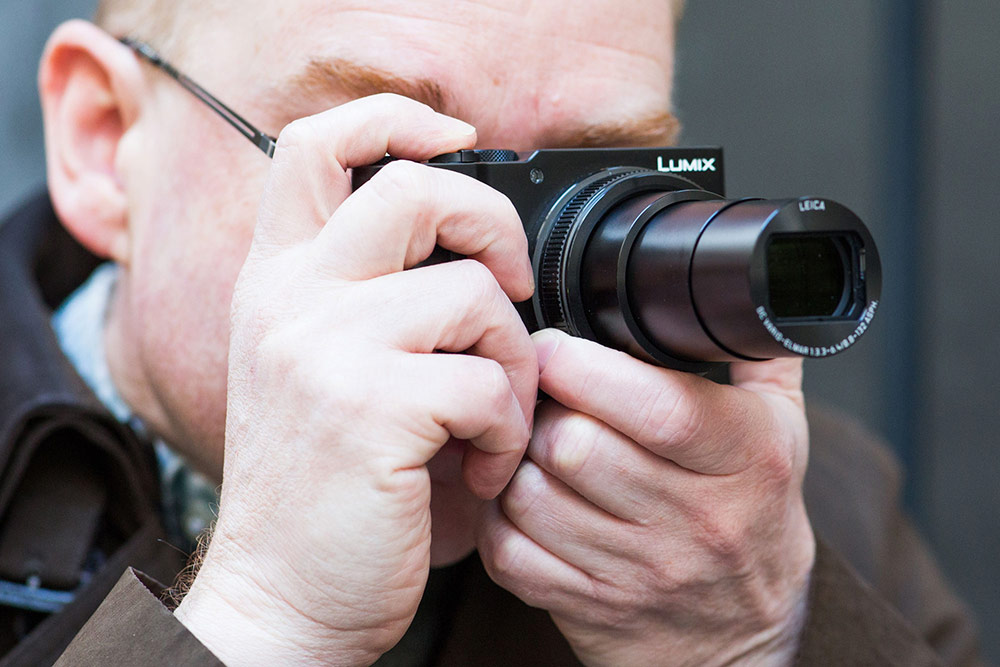
Amateur Photographer verdict
A pocket-sized compact camera with a decent sensor and super zoom reach, perfect for travel photography- Generous zoom range
- Slim, pocketable form factor
- Nice handgrip
- Narrow maximum aperture
- Fixed screen
Specifications at a glance:
| Camera type | Compact travel zoom with a Leica DC Vario-Elmar 24-360mm equivalent f/3.3-6.4 lens |
| Sensor | 20.1MP 1-inch sensor |
| Continuous shooting | 6 fps |
| ISO | 80-25,600 |
| Image stabilisation | 5 axis HYBRID O.I.S. |
The Panasonic range of TZ travel compacts (known as ‘ZS’ in North America) includes some of the most consistently popular travel cameras out there. The combination of a 1-inch sensor and a generous zoom range is ideal for travel, giving you dynamic range and optical flexibility that are both superior to what’s offered by any smartphone you’d care to name.
The Panasonic Lumix TZ200D is our pick for casual travel photographers who want a DSLR alternative that’s both portable and powerful (it’s the exact same camera as the Lumix TZ200, just with a higher-resolution LCD screen). Its Leica-made lens covers an expansive zoom range from 24mm equivalent all the way to 360mm equivalent. There aren’t many things you’ll photograph on your travels that won’t fit into that bracket! The five-axis optical stabilisation also helps the tele end of that lens be actually useable without being compromised too much by camera shake.
Producing punchy and vibrant images, the TZ200D is a great choice for just about any travel photographer. One thing to be aware of, though, is that its maximum aperture tops out at f/3.3, so you may find it struggles when the light gets low.
If you’re not quite tempted by the TZ200D, don’t forget to have a look at our guide to the best travel cameras for a range of other recommendations.
Check out our Sony RX100 VI vs Panasonic Lumix TZ200 head to head comparison.
Best for action
Best camera for action: DJI Osmo Action 5 Pro
Amateur Photographer verdict
The larger sensor of the Osmo Action 5 Pro makes it our choice for shooting action, even up against a GoPro. It produces high-quality stills at up to 40MP, in JPEG or RAW.- Superb stabilisation
- Captures high-res RAWs
- 47GB internal storage
- 20m native waterproofing
- No modular lens accessories
- Lots of cheaper rivals
Specifications at a glance:
| Camera type | Compact action camera |
| Sensor | 40MP 1/1.3-inch CMOS |
| Continuous shooting | 30 images/3sec in burst mode |
| ISO | Photo: 100-25600, Video: 100-51200 |
| Image stabilisation | Electronic stabilisation |
DJI has been duking it out with GoPro ever since the introduction of the first Osmo Action camera. This fifth iteration squares up to the GoPro Hero 13 Black, and while the GoPro might have the edge in terms of video with its 5.3K top resolution, if we’re talking in terms of photography, for our money the DJI Osmo Action 5 Pro narrowly wins out as the best action camera you can buy.
The stills capabilities of this camera have taken a huge jump from its predecessor, the Osmo Action 4. The previous camera left stills photographers a little underwhelmed by its 12MP top-line resolution – the Action 5 Pro blows that out of the water with its ability to capture fantastic 40MP stills in RAW or JPEG formats. This allows you to crop into frames to adjust your compositions without compromising on quality, and we also found that the RAW files themselves were offered lots of latitude for recovering detail in highlights and shadows. DJI promises that its sense is capable of capturing 13.5 stops of dynamic range – we believe it.
The sensor itself is a 1/1.3-inch type. While this isn’t as large as the 1-inch sensor you’ll find in premium compacts, it is larger than the sensor that GoPro uses, and this gives the Osmo Action 5 Pro an edge for low-light photography (an area where GoPro has always been pretty weak). The Osmo Action 5 Pro is also natively waterproof down to 20m, beating GoPro’s 10m, though in both cases this can be significantly extended using a waterproof housing.
Ultimately, the GoPro series still has the edge for video content, partly due to its higher resolution, but also due to its huge range of modular lenses. For stills photography though, the cheaper and more capable DJI Osmo Action 5 Pro is the best choice.
Read our full DJI Osmo Action 5 Pro review.
Best for underwater
Best camera for underwater photography: OM-System Tough TG-7
Amateur Photographer verdict
With RAW shooting, an optical zoom lens and a number of dedicated underwater modes, the TG-7 has a lot going for it.- Optical 4x zoom lens with f/2
- Does great with macro
- Built-in GPS
- Bigger and bulkier than action cameras
- RAW needed for best results
Specifications at a glance:
| Camera type | Compact camera with 4x optical zoom lens, f/2.0-4.9, 24-100mm equivalent |
| Sensor | 12MP 1/2.33inch BSI CMOS Sensor |
| Continuous shooting | 5fps mechanical, 20 fps with electronic shutter |
| ISO | 100 – 12,800 |
| Image stabilisation | CMOS shift, up to 2.5stops |
While the Olympus (or OM-System) Tough TG-7 doesn’t quite fit the definition of an action camera, it performs many of the same functions and is a compelling alternative for anyone who prefers the idea of a more traditional camera format. The Tough TG-7 is a tough compact, meaning it can take an absolute pounding and a soaking – there are a few of these on the market, but the TG-7 is generally regarded as the best.
As well as a more comfortable, grippable form factor, the TG-7 has one key advantage over traditional action cameras – a 25-100mm f/2-4.9 equivalent zoom lens, giving you much more compositional flexibility and an ability to get in close to distant subjects. It’s also got a nice big 3-inch 1.04m-dot LCD screen, which provides a much more pleasant composing experience than any of the small screens on traditional action cameras. It allows you to capture stills in RAW format, and this is worth doing for the best results (with additional time spent on post-processing, of course).
Of course, the TG-7 is not nearly as wearable as a GoPro, DJI or Insta360 camera, and isn’t as good for capturing POV footage. There is some built-in stabilisation, though it’s not on the level of GoPro’s or DJI’s.
Read our full OM-System Tough TG-7 review.
Best ultra-zoom
Best ultra-zoom compact camera: Nikon Coolpix P1100
Amateur Photographer verdict
In terms of zoom for your buck, the Nikon Coolpix P1100 and its 125x zoom lens are pretty well unrivalled. This hefty camera isn’t cheap, but it offers something unique.- 125x zoom
- Fully articulating screen
- Decent electronic viewfinder
- High price
- Screen not touch-sensitive
Specifications at a glance:
| Camera type | 4K 30p video recording |
| Sensor | 16MP 1/2.3-in.type, CMOS sensor |
| Continuous shooting | 7fps |
| ISO | 100-6,400 |
| Image stabilisation | 4 stops |
The Nikon Coolpix P1100 is a fairly recent addition to Nikon’s range of bridge cameras – though don’t get too excited, it’s mostly a reissue of the previous P1000, with a USB-C charging port to comply with EU regulations.
Still, bridge cameras have been enduringly popular for a long time now, and if you want the absolutely maximum amount of zoom for your money, this is how you get it. This chunky behemoth of a camera sports a 24-3000mm equivalent zoom lens, and can further extend that range via digital zoom (essentially just cropping) if desired. While this may seem like an expensive camera at first blush, it simply isn’t possible to get this kind of range in a single lens in an interchangeable-lens system – it doesn’t exist.
In terms of image quality, like most bridge cameras, the Coolpix P1100 is decent without being exceptional. Its 16MP 1/2.3-inch sensor does a fine job in decent light, and quality is generally well-maintained in the outer 2000-3000mm end of the zoom. And if you’re not using that end of the zoom, there’s no point buying this camera.
Handling is generally solid, and you have a choice of an articulating LCD screen or a decent electronic viewfinder for composition. The length of the zoom puts wildlife in play, though you’ll need to have some patience with the somewhat unpredictable autofocus system.
Read our full review of the Nikon Coolpix P1100.
How to choose the best cameras for photography
When you’re picking the best camera for photography, there are a number of key specifications and features worth honing in on. We would advise the main things to keep in mind when making your selection are as follows:
- Camera type
- Resolution & sensor size
- Autofocus
- Image stabilisation
- Frame rate (and speed)
- Handling
- Screen and viewfinder
- Card slots
- Lens range
Camera Type
There are three main types of digital cameras – mirrorless, DSLRs and compacts. Yes, there are other types with more specialist applications, such as action cameras, 360-degree cameras and medium format cameras; however, the majority of people who are looking for a camera for photography or videography are going to be choosing between one of the three main types. Let’s take a quick look.
Compact cameras
A term that doesn’t have anything to do with a camera’s size, compact cameras (or compacts) are a type of camera with a fixed lens that cannot be changed. This has natural advantages in terms of convenience, simplicity, ease of use and affordability. You pay the price on the box, and you get a complete camera-and-lens combo that has everything you need to start shooting.
The downside is, of course, versatility. Whatever lens the compact camera has is the lens you’re stuck with – if it doesn’t zoom far enough, or open up to a wide enough aperture for the kind of work you want to do, then there’s not much you can do short of buying another camera.
Then there’s also the fact that the convenience factor of compacts has been lessened by the fact that everyone carries a portable compact camera in their pocket these days (obligatory link to the best smartphones for photography). As such, the sun has pretty much set on the days of the cheap compact, and now the compact cameras that are still popular tend to be premium ones that offer a demonstrable image-quality advantage over a smartphone. The Fujifilm X100VI, featured above, is probably the most prominent example.
Mirrorless cameras
Mirrorless cameras used to be thought of as a slim and portable alternative to DSLRs (see below). However, they have since risen to become the dominant format of interchangeable-lens camera, with almost all manufacturers prioritising development of their mirrorless lines. Most of the cameras included in this guide are mirrorless, and that’s not something that’s going to change anytime soon.
So, what is a mirrorless camera? The clue’s in the name – where a DSLR contains an internal mirror mechanism that allows it to field an optical viewfinder, a mirrorless camera does not. This in theory allows them to be made smaller and lighter. Instead of the optical viewfinder, mirrorless cameras generally offer an electronic viewfinder or EVF. This used to be viewed as a negative, as EVFs were laggy, low-quality and unpleasant to use. However, they have improved massively, to the point where electronic viewfinders offering 100% coverage and a completely accurate preview of what the camera is going to capture.
The top-end professional cameras released in recent years are exclusively mirrorless, and many manufacturers are also filling out their lines with beginner-friendly, mid-range and enthusiast options. If you want the latest imaging tech, mirrorless is the place to be.
DSLRs
Once considered an essential purchase for anyone who wanted to be thought of as a serious photography, these days, DSLRs are something of a retro choice. However, there is still a contingent of photographers who doggedly prefer DSLRs, citing things like the immediacy of the optical viewfinder or the satisfyingly chunky handling. DSLRs tend to be larger than mirrorless cameras (though there’s plenty of overlap), and professional models in particular tend to be built very tough. The Nikon D850, one of the most popular and well-regarded DSLRs of all time, is an absolute tank.
If you want to get started with an interchangeable-lens system camera, there’s a good case to be made for DSLRs as a more cost-effective choice. They still take brilliant photos, they’re often plentifully available on the second-hand market, and the fact that they’ve been on the market so long means that they have built up big rosters of lenses, including older and more affordable options.
Check out our guide to DSLR vs mirrorless if you want to learn more about the differences, and we also have a dedicated guide to the best DSLRs.
Resolution and sensor size
There’s a variety of sensor sizes on the market, from 1-inch type up to medium format. As a general rule, image quality is better from larger sensors, but are a larger and bulkier system to carry around; not to mention a more expensive one. The lenses tend to be bigger and more expensive, too. Therefore, consider the weight of kit that you will carry against its potential image quality.
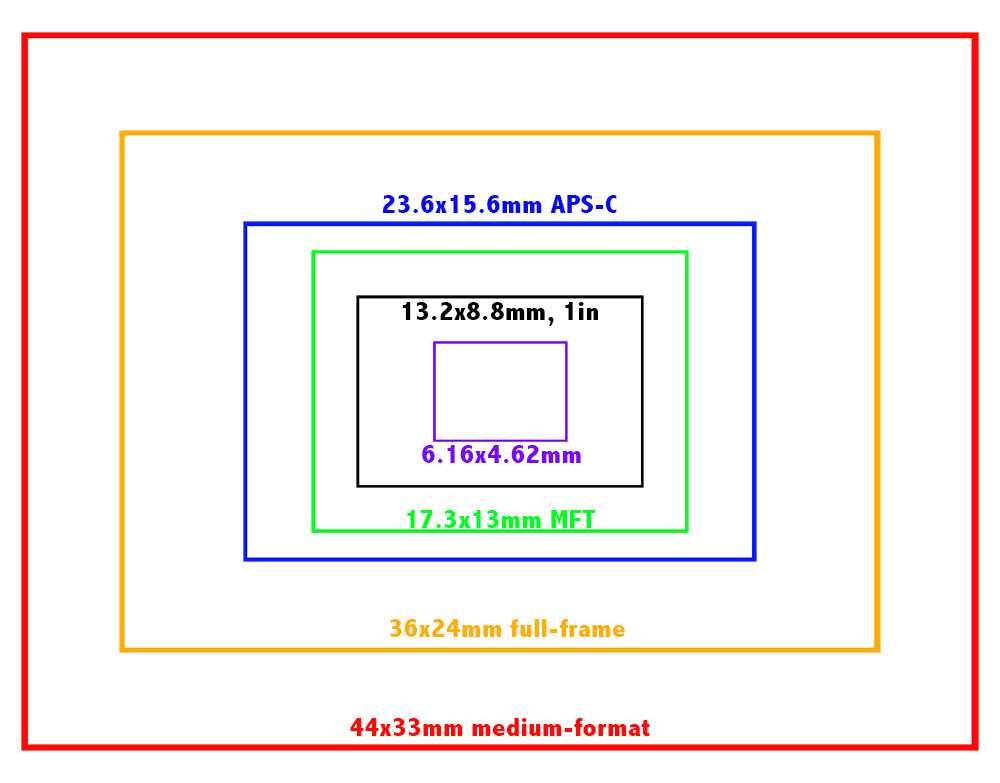
A compromise on both sides of the debate lands you with a middle-sized sensor (APS-C or Full-Frame), while ultimate portability will leave you with the smallest (one-inch or 1/2.3-inch) and ultimate image quality leads to medium format (or even larger). Resolution is also a key concern – if you’re intending to make big prints, or photograph something with lots of fine detail, extra pixels make more sense. If you’re keen to keep file sizes down, shoot lots of action or in low light, a lower pixel count might be a better option.
Autofocus
Some of the current mirrorless flagship models have incredibly impressive autofocus systems. But they often come at a high price, being targeted mainly at working professionals who need high-speed and accuracy at all times. Most of us arguably don’t need that kind of power, and you especially don’t if you’re photographing mainly still/static subjects such as landscapes, macro or even portraits. Have a think about how advanced an autofocus system you need (and are willing to pay for), and this can be particularly important if your passion is sports, action or wildlife such as birds. If it’s more static subjects like landscapes or travel photography, you probably don’t need the latest AI subject recognition autofocus.
Image stabilisation (or IBIS)
This is another specification that matters hugely to some people, and less so for others. If you’re happy to cart around a tripod with you, or you’re only ever shooting at fast shutter speeds in bright daylight, you’ll be less concerned. However, if you’re into night photography, low-light photography, shooting slowly handheld, or using long lenses, for example, then you’ll want to pay closer attention to IS specs, and look out for In-Body Image Stabilisation (IBIS).
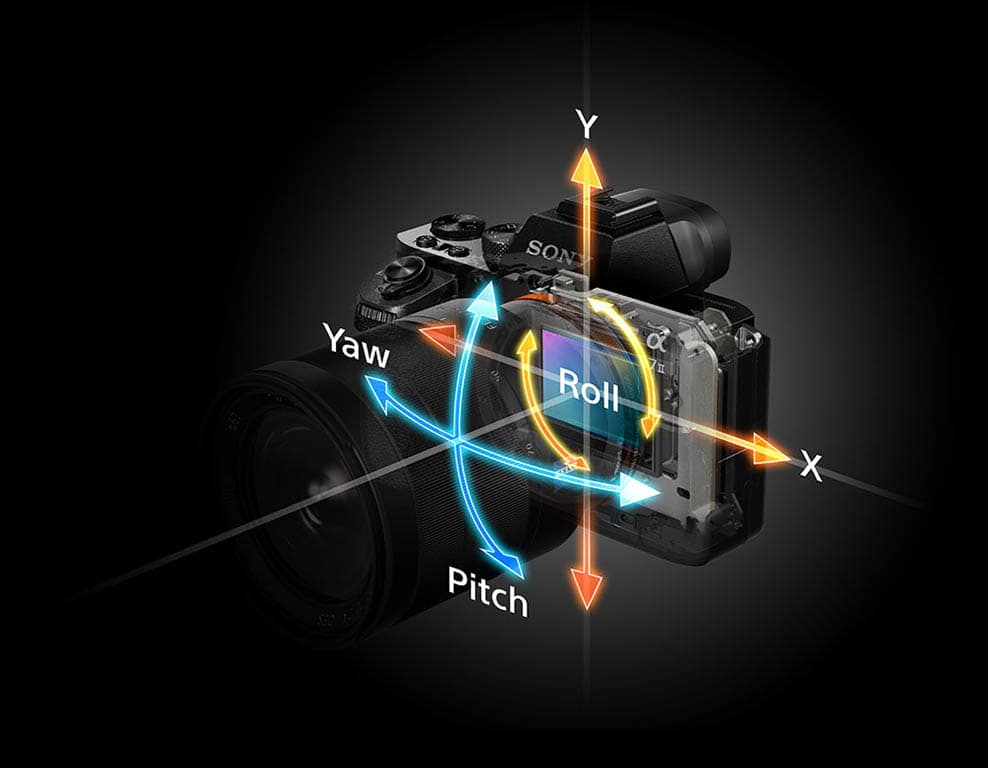
Frame rate
Again, this is something that, for lots of photographers, is a bit of a redundant specification. If you’re shooting static objects, being able to shoot at 20fps is an expensive specification that might barely – or never – get used. Of course, if you’re shooting wildlife, action, sports and similar high-speed action, you might want a fast frame rate and use high-speed continuous shooting every day.
Handling
This is an important one, but it’s not a straightforward one to quantify. Knowing how a camera feels and operates in your hand is ideal – if not necessarily always possible in advance in a world of online shopping. Pay careful attention to camera reviews that tell you how easy (or otherwise) the camera is to operate, hold and navigate around if you’re not able to handle it yourself before purchase. The weight of the camera and lens(es) can play an important factor in how easy it is to take with you, and how much you’ll enjoy using the camera.
Screen & viewfinder
All of the cameras on our list here are mirrorless, and therefore feature electronic viewfinders (EVFs). Pay close attention to the resolution of electronic viewfinders – higher is better, but very high-resolution viewfinders tend to only be found on the most expensive cameras. If you’re happier with optical viewfinders, then a DSLR might well be the camera for you – but you lose a lot of the benefits of mirrorless.
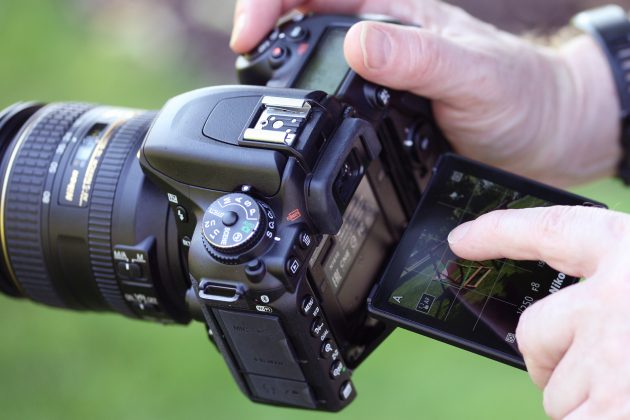
As for the screen, things to look out for are resolution, size, and whether it articulates or tilts. Having some movement is useful for composing from awkward angles, with articulating being the most flexible, but tilting perhaps being the quickest for reacting to certain scenarios, such as street shooting.
Card slots
Having more than one card slot is almost an essential for professional photographers who simply can’t afford to run the risk of not having a backup (especially for special occasions, such as weddings). For most other photographers, it’s a nice bonus to have, but perhaps not essential. That said, if you’re travelling and not able to easily back up your cards, they can also prove useful.
Lens range
If you’re looking at interchangeable lens cameras, it’s wise to pay attention to the accompanying lens ranges that go with them. Newer camera systems might have limited lenses, or they might not yet have specific or niche optics that you’re particularly keen on. Take a look at typical prices too, as again, newer systems might be pricier compared to longer, more-established systems.
How we test cameras
We test cameras primarily by using them to take photographs and video in a wide range of real-world situations. We evaluate their control layouts and handling, and the usability of their viewfinders and screens. We assess their autofocus across a range of different subjects and shooting scenarios and check their continuous shooting capabilities.
We also examine the effectiveness of their image stabilisation systems. Last but by no means least, we critically evaluate the image quality, in both JPEG and RAW, including resolution, high-ISO noise, and dynamic range. We then take all these factors into account, along with such things as portability and lens systems, when giving our final conclusion and score. You’ll find the full breakdown of how each camera has performed in our full reviews.
Related reading:
- How to market yourself as a professional photographer
- How much resolution do you actually need?
- Sensor size – which size is best?
Need further buying advice? Check out our full selection of buying guides. We also have options for beginners and kids!

